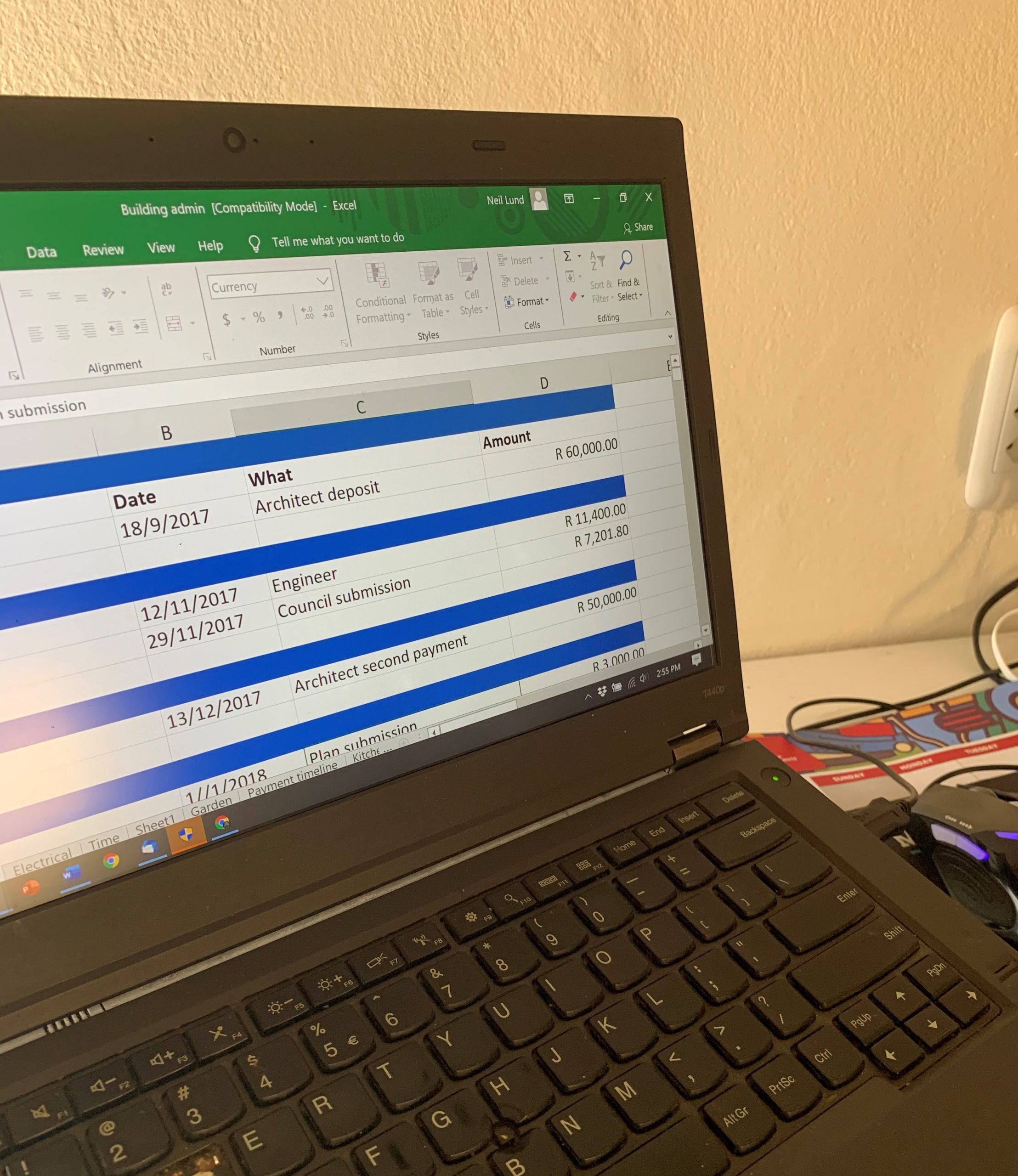Managing money
If you want your project to stay within a tight budget range, you have to keep a daily record of your spend and expected costs to come from day one. (If you are managing your own build, either on your own or with a project manager, it is easier to keep track of spending as you will physically be making each payment.)
The easiest way to do this is to create a spreadsheet including every possible area of outlay – from pre-build, administrative costs to final finishes. Initially, this would have to be largely speculative, unless you hire a quantity surveyor. It’s still important to go through this exercise as it helps you understand the full scale of expenses to come.
Once you send out your specs you can slowly fill in actual amounts and keep track of the daily expenses. Update your spreadsheet with the projected cost and the actual when you’ve paid it. It’s also very useful to keep another page with actual money going out every day (not everyone is an accountant, but find a way it makes sense to you).
There will be a time when payments are disputed with a contractor, and to have these numbers quick at hand, with the date they were paid, is very useful. Also remember, that small cash outlays add up very quickly over ten months. Open an account with your local/best-priced hardware store if you’re a self- builder. You’re likely to be able to get a discount, and you or your builder’s spending is tracked.
Similarly, each invoice needs to be filed. Not only for the obvious reasons, but also for future capital gains tax if you sell the property as you can negate all expenses against any profit gained.
For more information on building costs, click here.
Contracts
Check, double check and sign all contracts with subcontractors. Ensure there are guarantees in place and check how long they are applicable. If you are assigning a contractor to complete the full build, include a clear payment schedule with milestones, and keep a retainer for final finishes and snags. A small, upfront deposit is to be expected, but only if the builder has significant references.
Remember, even highly regarded contractors can go bankrupt, so only invest as much money as work done (hence the pre-agreed milestones). Also stipulate expected time lines. As 90% of builds present unexpected delays, be reasonable with time penalties. A better option might be a reward for timeous completion.
Any changes must be recorded not only on the plan (with updates printed, dated and distributed to all teams), but also as an addition to the contract and preferably signed (you and contractor), with an agreed monetary value. You don’t want to have major unexpected bills at the end. This almost always leads to relationship breakdowns. You have to have proof and values noted at the time.
Cashflow
If you’re a self-builder you have a responsibility to manage the cash flow on a build. Labourers will likely be paid cash on a weekly or bi-weekly basis. Plan well ahead and be sure to have the money available on time, especially if you’re depending on draws from the bank.
Banks are always conservative and it’s likely you will always get less than you expect from their draw. It’s useful to have other short-term lending facilities available over a build, as long as you manage strict control and budgets. Also ensure safe practice if you’re having to draw cash or deliver it to site. Draw from different branches, on different days.
Similarly, if you’ve hired a contractor, pay them timeously as they depend of your regular down payments too. Non-payment leads to many building contractors going bankrupt.
Site meetings
Insist on site meetings between all relevant contractors and yourself once a week. Plan changes will occur, so check everyone is updated, and on track for milestones. Having said that, things can go wrong very quickly on a building site. Daily visits are best to micromanage questions or issues, even if you have a project manager. You will ultimately be living in the house and will notice that you would have preferred the door to open the other side. It is impossible for cover every detail on a plan or spec sheet.
Also, use this time to plan future orders. Many components need three/four weeks lead time so if it’s not ordered and paid for ahead, major delays occur.
WhatsApp groups are also useful for quick questions as you’re able to share photos and requests, but use them professionally and reserve private communications for disputes.

